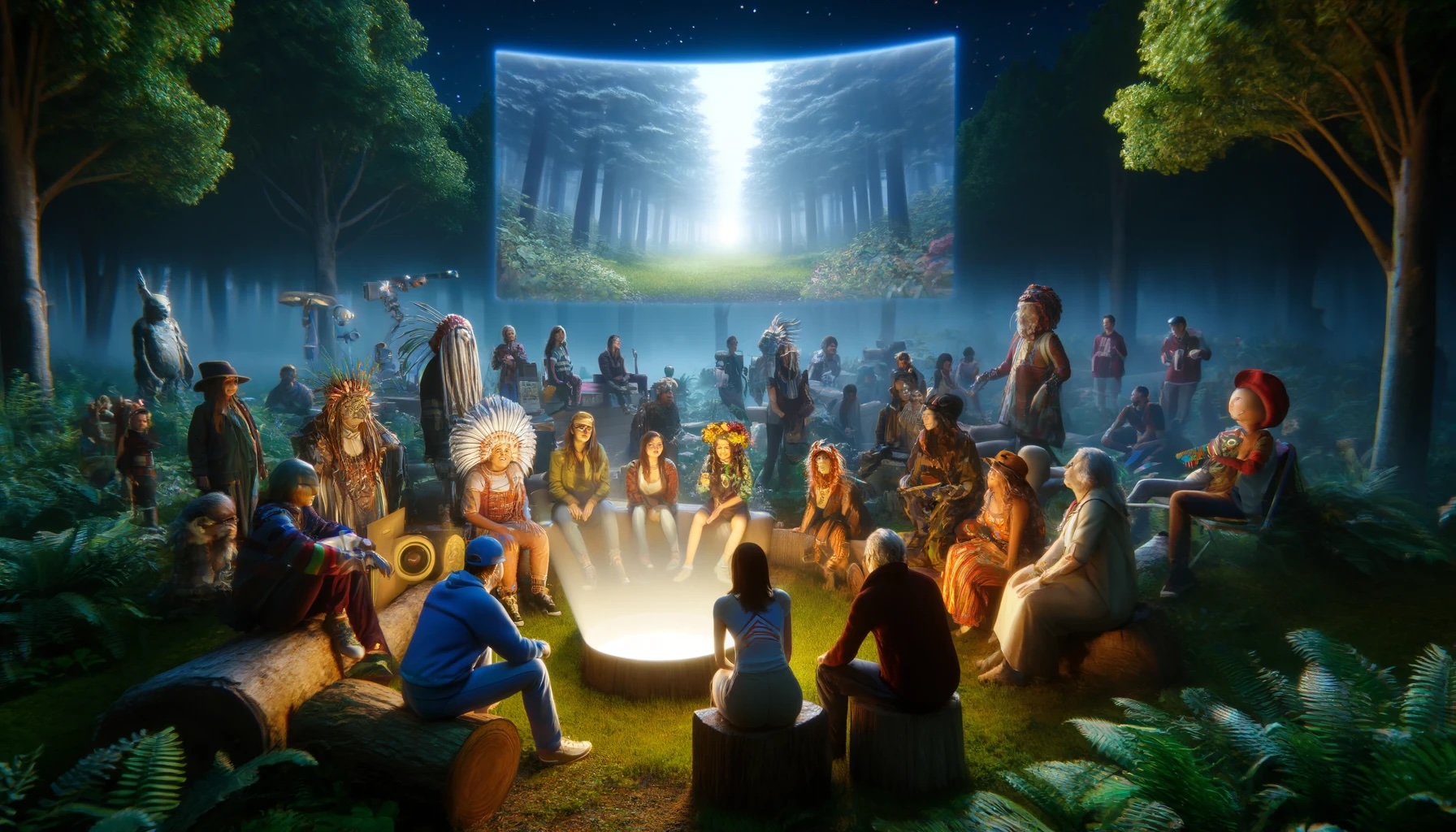Image generated using OpenAI’s DALL-E
Since the rise of personal computers, humanity’s dependence on and emotional connection to technology continues to break new ground. This entrenched connection empowers people to pursue their social goals at the touch of a finger. Digital communication enables people to make friends with new acquaintances met in online spaces and to form diverse online communities—crossing nearly every type of boundary. Within this complex landscape, many people operate with an unspoken expectation that technological mediation can help them achieve their deep-rooted emotional and social needs.
It’s no wonder that generations adjust their use of technology to realize these inner desires. Whether stretching a coiled phone cord down the hall into a private room in the 1980s or customizing bots for an online community, people continually demonstrate the desire to modify technologies for relational purposes.
Great care is taken in the physical world to create meaningful experiences tied to our desire to connect authentically with others. For example, people across many cultures intentionally meet in coffee shops or tea houses as ideal environments to immerse in a relational experience. The ambiance frames and facilitates their deeper intentions.
Similarly, there is a trend across various social platforms to embrace rich, immersive experiences comparable to curated in-person settings. Multiplayer video games like Fortnite, virtual reality apps like VRChat, and community platforms like Discord have paved the way for people to achieve immersive experiences of belonging. While technology like virtual reality is a sensory immersion, certain 2D platforms such as Discord offer features that provide relational and emotional immersion. Even as we wait for the ubiquitous adoption of sensory-immersive technologies, we continue to witness a shift in humanity’s use of technology as a framework to support satisfying relational and emotional immersion.
This movement is cultivating an immersive digital culture and signaling a significant shift in digital lifestyle. Pioneered by adult gamers, Gen Z, and Gen Alpha, there are various distinctive characteristics of immersive-culture individuals and communities.
 Image generated using OpenAI’s DALL-E
Image generated using OpenAI’s DALL-E
Individuals look beyond the mediating qualities of digital communication and focus on nurturing authenticity.
Persistent Presence
Being relevant within digital relationships requires being frequently active and accessible online. Frequency and participation establish a sense of commitment and relevancy. Persistent presence validates digitally formed and maintained relationships as equal to the quality of unmediated, physical-world connections. Perceived presence might also involve being native to the platform, community, or app.
Comfort with Avatars
Within the context of multiplayer video games and virtual reality worlds, people have become comfortable relating their innermost feelings mediated through their avatars. Avatars provide self-expression and personal security—establishing a platform for authenticity in communication. Many develop a highly personal connection to their avatar, which extends to their core identity and dignity.
Making Memories
The ability to deepen relationships hinges on shared, positive moments. Over most of the past few decades, digital communication has been utilized as a tool to facilitate in-person experiences. However, the immersive digital culture establishes and deepens relationships through shared experiences within digital platforms, such as attending the Eminem concert in Fortnite together. These shared moments can create lasting memories that strengthen relational bonds.
Communities autonomously create and nurture a sense of belonging, connection, and safety.
Private Spaces
Communities choose private servers, channels, or apps to establish an ethos of safety and curated belonging. The move to private spaces avoids the pitfalls of ads and algorithmic manipulation and embraces customization and separation. According to a RhythmOne study, over 80% of social shares activity happens on private or dark platforms. Within the confines of the private space, members can be themselves and immerse themselves in the community and relationships.
Creating Kinship
With persistent presence, members form an emotional connection with their community. Members often develop long-term relationships extending beyond a specific digital platform. It’s common for members to refer to the community as a family, and the ties can be stronger than those to their birth family.
Leveraging Events
The desire to spend time with other members and the joy of making memories incentivizes communities to plan and host digital events. Communities deepen their bonds through group participation in online video games, movies, topical discussions, and concerts. Whether organized or impromptu hangouts, events are a crucial ingredient in nurturing connection and belonging.
With the growing pervasiveness of immersive digital culture, we encounter both challenges and opportunities. Many of our challenges center on moving from an existing worldview of the digital landscape to this new paradigm. At the same time, the immersive culture is pressing into emotional satisfaction found in the accessibility to a global pool of people with similar sensibilities, interests, or objectives. As we see this movement shaped by technology and influencing developer decisions, it’s clear that the momentum will carry it into the future. Today, we can be inspired to begin an empathetic journey to understand and engage a novel culture as a new frontier revealing a glimpse into our digital future.
